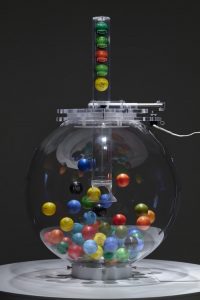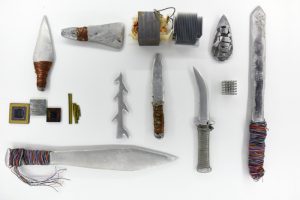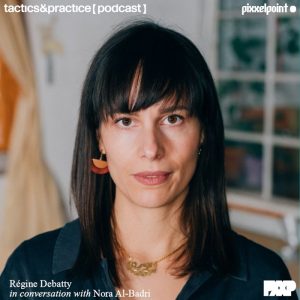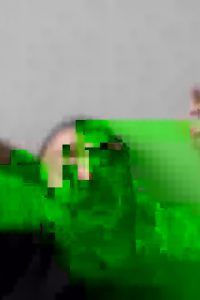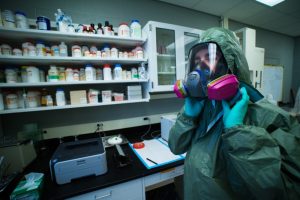Unfortunately, the bad news is that this show has already finished. But, Scorpio’s Garden at Berlin’s Temporäre Kunsthalle was a very beautiful exhibition and this is s small attempt to highlight some of the 60 pieces on show, all by Berlin-related artists, curated by Danish artist Kirstine Roepstorff.
Being an explicitly subjective snapshot of a certain scene that is revolving around several locations, mostly in Kreuzberg such as Silberkuppe or Basso, the show seemed to draw a lot of strength from the reflection of an approach and aesthetic that is running through a lot of the work.
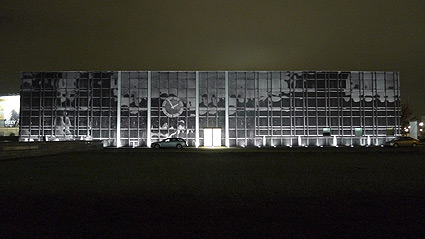 Bettina Pousttchi, Echo
Bettina Pousttchi, Echo
The whole façade of the Kunsthalle served as the biggest piece in terms of size as Bettina Pousttchi used it for her photo installation Echo which turned the the building into an ironic doppelgänger of the Palast der Republik, the GDR’s parliament which used to stand right next to where the Kunsthalle is now located until its demolition was finished last winter.
What I particularly loved about this piece is not the (quite successful) sensation of déjà-vu it evoked but the fact that it was facing an equally virtual image of the dreadful Stadtschloss (the old palace which will be resurrected as the zombie of architecture if its proponents will be able to get hold of half a billion Euros) as if to say that things lost can as little be recreated without becoming a farce, just as history can not truly be eradicated like it has now been attempted with the modernist Palast der Republik (and the old Stadtschloss before).
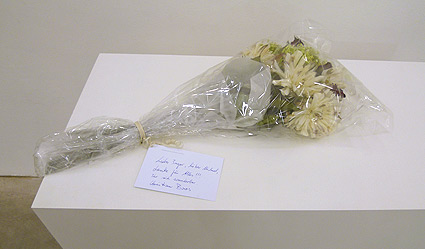 Elmgreen & Dragset, Liebe Grüße
Elmgreen & Dragset, Liebe Grüße
Inside, Elmgreen & Dragset refer to “Foucault’s proposition that the acceptance of certain behavioral patterns within certain structures is what leads to the limitation of people in their actions, and not the structure itself.” In Liebe Grüße (2009), a bouquet like those presented at the opening of an exhibition is left as if it were forgotten on a pedestal. The flowers look faded already but like so often in their work, they are a well-made fabrication so that their only reveal their artificiality after a second glance (and asking the gallery staff).
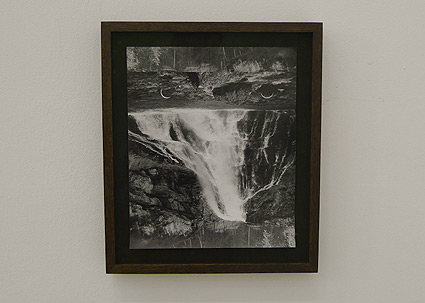 Alexandra Hopf, Le Balcon du Monde
Alexandra Hopf, Le Balcon du Monde
The paintings of Alexandra Hopf emerge as reverse glass paintings in finely sprayed layers. The very first layer of paint remains visible even after subsequent layers are applied, thus turning on its head the classical structure of paintings in which the sketch phase is covered by the final version.
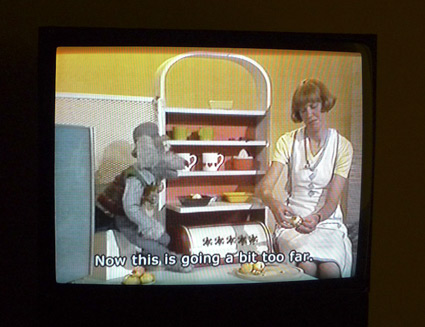 Laura Horelli, Haukka-Pala (A-Bit-to-Bite)
Laura Horelli, Haukka-Pala (A-Bit-to-Bite)
In the lovely video piece Haukka-Pala (A-Bit-to-Bite) (2009), Laura Horelli tells of her relationship to her deceased mother, who worked as a nutritional expert for a children’s television series in Finland. Her mother died of cancer some two years after the show was produced. In the video, one sees her in conversation with a mouse, talking about food and cooking. It’s at the same time funny and somewhat eerie, and Horelli is adding her own personal thoughts to the scene as a voice-over. I wished I would have had time to watch it in its entirety.
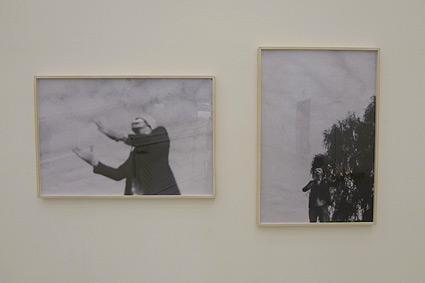 Untitled (mime 1 & 2), Dash Show
Untitled (mime 1 & 2), Dash Show
Untitled (mime 1 & 2) by recently deceased New York artist Dash Show casts the socially marginalized figure of a street performer as a godlike character in two beautifully strangely framed and out of focus photographs.
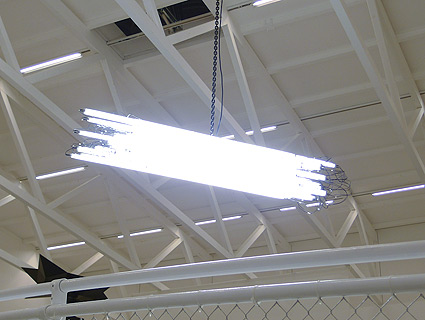 Monica Bonvicini, Blind Protection
Monica Bonvicini, Blind Protection
Monica Bonvicini‘s history of architecture is also a “history of sexual oppression. In her sculptures, installations, and videos, she presents objects and materials of everyday life as sites of ideological conflict”. The light installation Blind Protection (2009), a bundle of fluorescent lights that is arranged around a transparent PVC tube, the bright light from which briefly blinds the beholder.
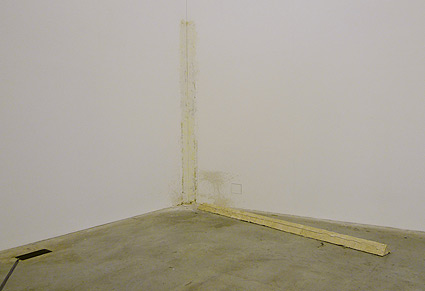 Rechte Ecke, Henrik Olesen
Rechte Ecke, Henrik Olesen
Henrik Olesen showed two very different pieces, yet both of which “deconstructs notions of authenticity and cultural production and recharges them with meaning in a remix procedure”. The first of them is borrowing from the early sculpture of Bruce Nauman. His cast of the Kunsthalle’s right corner in concrete, Rechte Ecke (2003/2009) lies across the floor as if fallen down, with marks of the casting process still visible on the wall.
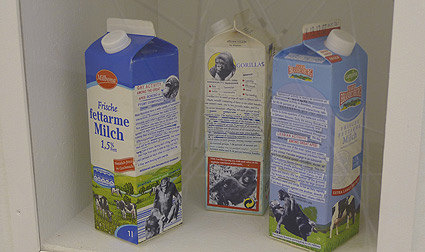 Ohne Titel, Henrik Olesen
Ohne Titel, Henrik Olesen
The second piece consists of milk Tetra Paks on which the nutrition information has been deliberately replaced with collaged information on homosexuality in the animal kingdom. So instead of calcium contents, one learns about the kinky habits of gorillas and bonobo apes. Somewhat pranky, it does speak about demonstrating the existence of invisible limits and territories in today’s social landscapes.
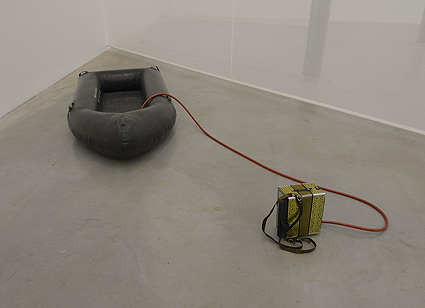 Inflated Dinghy, Kirsten Pieroth
Inflated Dinghy, Kirsten Pieroth
A beautiful object, Kirsten Pieroth‘s Inflated Dinghy (2009) uses the air that streams from a harmonica to pump up a rubber boat, and “creates with the transformation of air to music a metaphor”.
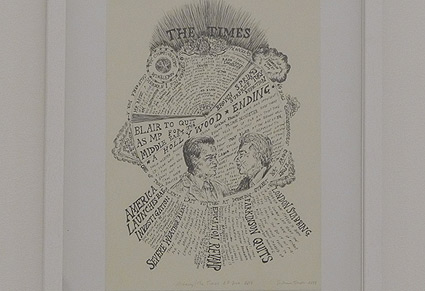 11 Alchemy Works, Suzanne Treister
11 Alchemy Works, Suzanne Treister
Suzanne Treister transcribes in her series 11 Alchemy Works (2007) “the title pages of international newspapers and translates them to alchemistic drawings. “The news no longer reaches the reader in clearly structured and soberly placed patterns, but in neurotic outbreaks that represent the world as a site that is driven by ominous forces, powers, and beliefs. Using the symbols of a secret language, her works explain the world system in the form of organic diagrams that are linked to notions of omnipotence.”
Lastly, I believe that my favorite and also the discovery of the show was American artist Jason Dodge who “works with frugal means and suggestive allusions, staging traces of past events at the center of which are protagonists whose existence and impact remains at the threshold between fiction and reality”. He was showing several pieces, all of which were as subtle as they were poetic.
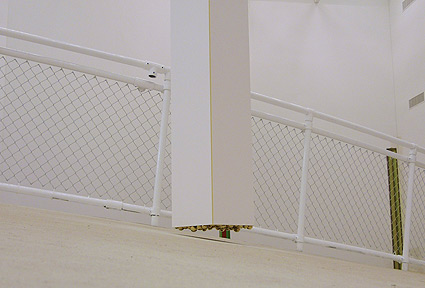 Column bells, Jason Dodge
Column bells, Jason Dodge
Column bells (2009) “towers as a rectangular, narrow paper column, like a chimney. The bells at the bottom were made by the Huck family in Nuremberg, bell-makers for five generations, and respond to the movement of air in the space.”
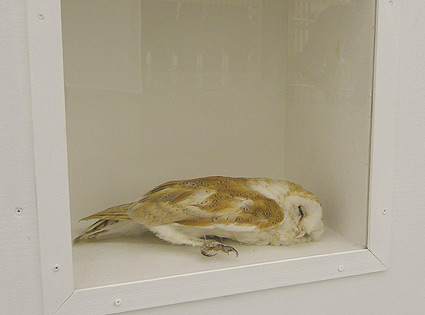 Rubies Inside of an Owl, Jason Dodge
Rubies Inside of an Owl, Jason Dodge
Rubies Inside of an Owl (2006) is a taxidermied owl whose stomach is filled with rubies. It was hidden in a niche below the curved platform that dominated the space of Scorpio’s Garden, almost as if sleeping.
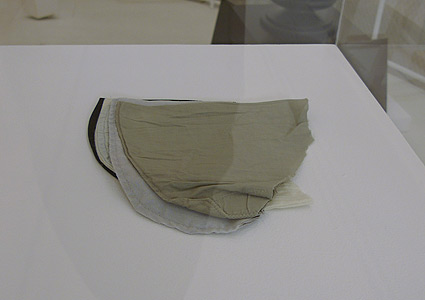 Order of Altitude, Jason Dodge
Order of Altitude, Jason Dodge
In Order of Altitude (2008) consists of the stacked trouser pockets of five people from different professions, increasing in ‘altitude’ from a window cleaner to a pilot, but this metaphorical classification “could be subject to other criteria as well, say body size or social status”, so the meaning of the allusion remains in the attribution of the viewer.
More images.
Next up at the Temporäre Kunsthalle is a show called “Zeigen. An Audio Tour through Berlin”, opens December 4th at 9 pm.

